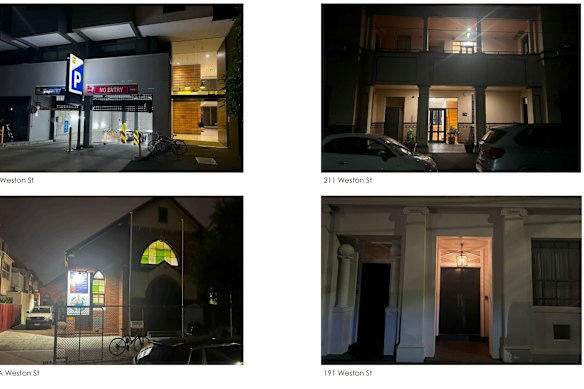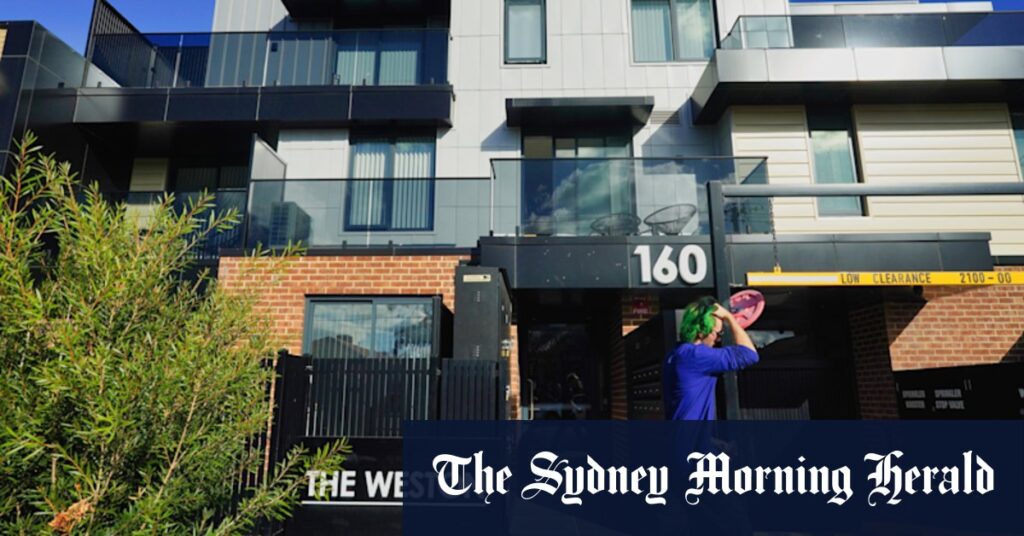She said it was not an appropriate sign to have operating in a residential area, particularly in such a stark shade of white.
“It’s not a soft white, it’s a really bold white. Neon supermarket white is what we call it,” she said. “It didn’t have to be so big, it could have been turned off on a timer.”
VCAT said the illuminated signs were inappropriate for the area. Credit: Luis Enrique Ascui
Another objector, who asked not to be named, said that the size of the letters, as well as other lights eminating from the development, including the carpark, meant it was “lit up like a Christmas tree” at night.
The objector said the impact from the lights meant their front bedroom was constantly illuminated, making it difficult to sleep.
“I had to put up double blinds to counter it, but it still seeped in around the edges,” they said.
“It’s really drawing attention to itself, which is really not part of the aesthetic around here. I’m not quite sure why that needed that kind of advertising.”

Examples of other lighting near The Weston development.
As part of their application to VCAT, the developer said that the lights were appropriate because they helped people find the property and provided passive surveillance for security.
They also argued that the signs were modest in size, a good design and unobtrusive. They also cited several other externally lit up buildings in the area, which is close to Lygon Street, including a carpark and scout hall.
Loading
“The client didn’t see there would be an issue,” said architect Joshua Amsellem, who represented the developer in the permit application.
The building’s location near factories and shops, close to a busy part of Brunswick East was also cited as a reason for why the lighting should remain on.
However, VCAT member Christopher Harty said that the illuminated signs were inappropriate for a residential area, where it was important to strike a balance between darkness for sleeping and lighting for public safety.
“The illumination of the signs reflects a white light which creates a contrast to the streetscape at night with local street lighting,” he wrote in his ruling.
“[It] is out of place with the appearance of the area and the character of this residential area and not sensitive to residential amenity.”
A proposal by the developer to dim or turn off the lights between 11pm and 7am was rejected.
Harty said the lit-up signs were unnecessary for showing the address of the property.
“The signs as they are, non-illuminated, provide sufficient site identification that is appropriate for the context of the site,” he wrote.
Read the full article here

